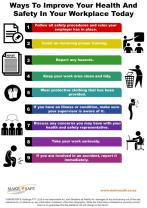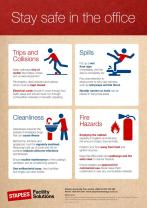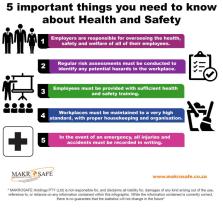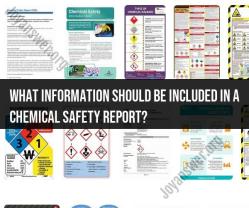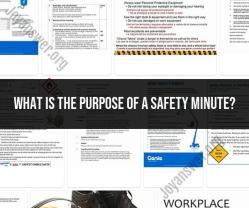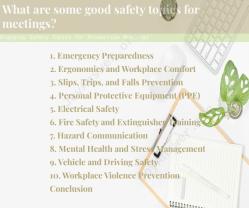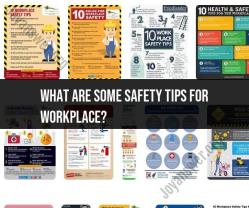What do you need to know about health and safety training?
Health and safety training is crucial for ensuring a safe and healthy work environment. Here are key points to consider:
Legal Requirements: Familiarize yourself with the specific health and safety laws and regulations relevant to your industry or region. Compliance with these regulations is essential for creating a safe workplace.
Risk Assessment: Understand the process of identifying and assessing workplace hazards. Regular risk assessments help in recognizing potential dangers and implementing measures to control or eliminate risks.
Training and Education: Proper training is vital for employees to recognize hazards, understand safety protocols, and use equipment safely. Training should cover areas such as emergency procedures, handling hazardous materials, and using protective equipment.
Safety Equipment and Gear: Ensure that employees have access to and are trained in the proper use of safety equipment and gear relevant to their tasks. This includes personal protective equipment (PPE) like helmets, gloves, goggles, or respirators.
Emergency Procedures: Educate employees about emergency evacuation plans, first aid procedures, and protocols for reporting accidents or incidents. Conduct drills to practice emergency responses.
Health and Well-being: Consider the physical and mental well-being of employees. Promote ergonomic practices to prevent musculoskeletal disorders and provide support for mental health issues.
Continuous Improvement: Health and safety practices should be regularly reviewed and updated. Encourage a culture of reporting near misses or hazards to continuously improve safety measures.
Management Commitment: Management support and leadership in promoting and enforcing health and safety standards are crucial. Management should actively participate in creating a safe workplace culture.
Worker Participation: Involve employees in health and safety decision-making processes. Encourage them to provide feedback and suggestions for improving safety measures.
Documentation and Record-Keeping: Maintain accurate records of training sessions, risk assessments, incidents, and safety measures implemented. These records help in monitoring compliance and identifying areas for improvement.
Regular Audits and Inspections: Conduct routine audits and inspections to identify any shortcomings in safety protocols and take corrective actions promptly.
Cultural Shift: Aim for a cultural shift where safety becomes a core value within the organization, prioritized as much as productivity and profitability.
Understanding and implementing these key points in health and safety training not only ensures compliance with regulations but also fosters a safe and healthy work environment that benefits both employees and the organization as a whole.
What are the core aspects covered in health and safety training programs?
Health and safety training programs cover a wide range of topics, but at their core, they focus on promoting safe work practices and preventing workplace injuries and illnesses. Here are some of the key aspects commonly covered:
General Awareness:
- Understanding workplace hazards: Identifying and recognizing potential hazards in the specific work environment, such as physical, chemical, biological, and psychosocial hazards.
- Safety regulations and standards: Learning about relevant safety regulations and standards set by organizations like OSHA (Occupational Safety and Health Administration) or other applicable regulatory bodies.
- Risk assessment and control: Understanding how to assess risks associated with hazards and implement appropriate control measures to minimize or eliminate them.
- Emergency preparedness and response: Knowing how to respond to emergencies like fires, spills, or medical situations, including evacuation procedures and first aid basics.
Specific Training:
- Job-specific safety procedures: Depending on the job role, training may cover specific procedures for safely operating machinery, handling hazardous materials, working in confined spaces, using personal protective equipment (PPE), and more.
- Ergonomics and safe work practices: Learning about proper posture, lifting techniques, and other ergonomic principles to prevent musculoskeletal disorders.
- Fire safety and prevention: Understanding fire hazards, extinguisher use, and evacuation procedures.
- First aid and CPR: Basic training in providing first aid and CPR in case of emergencies.
- Bloodborne pathogens and infection control: Training on preventing the spread of infectious diseases in the workplace.
- Mental health and stress management: Recognizing signs and symptoms of workplace stress and understanding coping mechanisms and resources available.
Communication and Participation:
- Importance of reporting hazards and incidents: Encouraging open communication about safety concerns and reporting hazardous situations or work-related injuries and illnesses.
- Worker participation in safety programs: Training on how workers can actively participate in safety programs and committees within their workplace.
- Safety culture and behavior: Fostering a positive safety culture where everyone prioritizes safety and is accountable for safe work practices.
The specific topics covered in health and safety training programs can vary depending on various factors, including the industry, regulations, employer requirements, and worker risks. However, the core focus remains on equipping workers with the knowledge and skills necessary to work safely and prevent harm.
Remember, an effective health and safety training program is an ongoing process. Regular refresher training, updates on evolving regulations, and addressing specific workplace concerns are crucial for maintaining a safe and healthy work environment.
I hope this overview helps you understand the core aspects covered in health and safety training programs! Feel free to ask if you have any further questions about specific topics or the importance of such training in different workplace settings.


